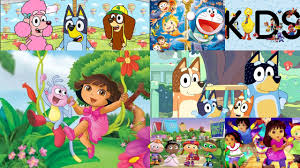Character development remains a cornerstone of childhood education, and today’s teacher often faces the challenge of conveying complex moral lessons in ways that resonate with young students. Increasingly, educators are discovering valuable allies in this mission through kids animated shows that feature compelling characters navigating relatable ethical dilemmas. These colorful stories offer powerful frameworks for discussing values and behavior in terms children readily understand and embrace.
The strategic integration of animated content into character education leverages children’s natural affinity for storytelling and visual narratives. When students form connections with animated characters, they often internalize the moral lessons these figures exemplify through their adventures. Skilled educators recognize this psychological mechanism and thoughtfully select programming that reinforces classroom values while engaging students’ imagination and emotional intelligence.
Courage represents one of the most frequently explored virtues in children’s animation, portrayed through characters facing fears and standing up for what’s right despite challenges. These narratives provide concrete examples that children can understand more readily than abstract discussions of bravery. Teachers can reference these stories when encouraging students to attempt difficult tasks or stand up for classmates, creating tangible connections between animated scenarios and real-world situations.
Empathy development benefits tremendously from well-crafted animated content that portrays characters experiencing various emotions and perspectives. When shows depict characters learning to understand others’ feelings, they model this crucial social skill for young viewers. Classroom discussions following these episodes can help children practice perspective-taking and emotional recognition—foundational skills for building healthy relationships throughout life.
Perseverance appears consistently in animated programming through characters who face setbacks but continue striving toward goals. These stories naturally counter the instant gratification messages prevalent in modern society, showing that worthwhile achievements require sustained effort and resilience. Teachers can reference these narratives when students encounter academic challenges, reinforcing that mistakes and difficulties form essential parts of the learning process.
Honesty and integrity emerge as central themes in many animated series, often explored through storylines where characters face temptations or consequences for deception. These moral lessons, delivered through engaging narratives rather than didactic instruction, resonate deeply with young audiences. When educators discuss these themes explicitly, connecting fictional scenarios to classroom expectations, they reinforce ethical frameworks in memorable ways.
Cultural respect increasingly features in contemporary animation, with programs deliberately showcasing diverse traditions, family structures, and perspectives. These representations provide natural opportunities for developing cross-cultural understanding and appreciation for difference. Thoughtful teachers can build upon these elements to foster inclusive classroom environments where all students feel valued and represented.
Environmental stewardship appears frequently in modern animated content, with many programs incorporating messages about conservation, sustainability, and respect for nature. These themes align perfectly with science curriculum while nurturing environmental consciousness. Teachers can extend these lessons through classroom projects that connect animated environmental messages to real-world conservation efforts.
Conflict resolution represents another valuable skill modeled in many children’s programs, showing characters working through disagreements constructively. These scenarios demonstrate alternatives to aggression or withdrawal when facing interpersonal problems. Educators can reference these examples when mediating classroom conflicts, asking students to consider how favorite characters might resolve similar situations.
Teamwork and collaboration feature prominently in animated series where diverse characters combine their unique abilities to overcome challenges. These stories naturally illustrate that different strengths and perspectives contribute to successful problem-solving—a lesson applicable to classroom group work and broader social contexts. Teachers can explicitly draw these connections, helping students apply animated examples to their own collaborative projects.
Critical thinking development occurs naturally when teachers guide discussions about character choices and story consequences. By asking questions like “What might have happened if the character had made a different choice?” educators encourage analytical thinking about actions and outcomes. This cognitive engagement transforms passive viewing into active moral reasoning that builds decision-making skills.
Implementation strategies determine the educational value of animated content in character education. Rather than treating animation as mere entertainment, effective teachers integrate it purposefully into social-emotional learning plans. This might involve pausing at key moments for discussion, creating role-play scenarios based on show dilemmas, or having students journal about character decisions and alternative approaches.
Parent involvement enhances the impact of animation-based character education. When teachers communicate about classroom media use and its connection to values education, parents can reinforce these lessons through home viewing and discussions. This partnership creates consistency in moral messaging across environments, strengthening character development through multiple channels.
Assessment considerations should acknowledge that character growth happens gradually and often manifests in subtle behavioral changes rather than measurable academic outcomes. Perceptive educators look for evidence of moral development in classroom interactions, conflict resolution approaches, and student reflections rather than traditional testing formats. This observational assessment recognizes the complex nature of character development.
In conclusion, thoughtfully selected animated programming offers valuable resources for character education that complement traditional teaching approaches. By leveraging children’s natural engagement with these stories and explicitly connecting them to moral development goals, educators create memorable learning experiences that shape values and behaviors. As education continues evolving, the strategic integration of quality animated content represents a promising approach for nurturing not only knowledgeable students but compassionate, ethical individuals prepared for positive social contribution.

